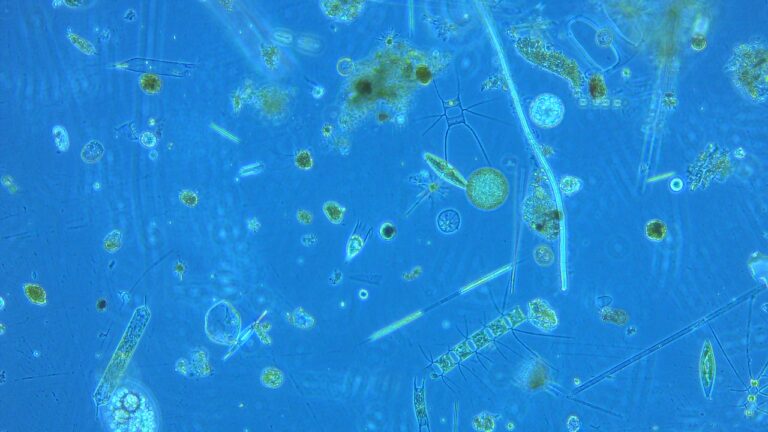Marine Science
Smart technology shows where we’re at
A combination of state-of-the-art sensors and standardized data analysis will transform research for tracking animals and humans.


Biologging projects that monitor daily movements of animals are important in examining the effects of climate change.
© 2015 idivehousing.com

Researchers are combining lessons from advances in human tracking devices and analytical techniques with those from satellite tracking of marine animals.
© 2015 KAUST
Tracking technology to monitor the movement of animals, birds and humans can provide invaluable insights into behavior, habitat-use and migration patterns. Researchers at KAUST are forging a path towards integrated, standardized analysis of the big datasets generated by the study of “movement ecology” while honing the design of “biologging” sensors used for such studies.
Satellite tracking of individual creatures has been a key tool for ecological and biological researchers since the 1990s. On an immediate timescale, tagging can provide high-resolution data on a creature’s daily habits, how it behaves and how it uses its habitat. For a far broader overview, tracking over years and decades can provide a comprehensive picture of the behavior of a species – for instance, by mapping patterns of dispersal and migration. These biologging projects can also help scientists examine the longer-term impacts of climate change and other extreme events on land and in the oceans.
After years of tracking marine creatures and monitoring ocean ecosystems, Carlos Duarte, a professor in KAUST’s Red Sea Research Center, realized the potential of the big datasets in his field. Taking inspiration from recent advances in human tracking devices and the associated analytical techniques, Duarte now has a clear plan for the future of biologging in the oceans.
“Last year I helped organize an international, interdisciplinary workshop that brought together researchers in marine biologging and data scientists working on human mobility,” said Duarte. “Our aims are twofold: to apply analytical techniques from human tracking to the big data generated in ocean research and to reinvigorate research and development to update the sensors used for animal biologging.”
KAUST hosted a second workshop — the Marine Megafauna Movement workshop — in October 2015 to further promote global collaboration. Collaborative initiatives will benefit researchers across the world, including their own scientists like marine biologist Michael Berumen. His most recent work involves the tagging of whale sharks, together with manta and devil rays, and has provided unprecedented insights into their behavior, diving patterns and habitat use.
“The best part of my job is that every time we tag a creature, we learn something completely new and unexpected,” said Berumen. “The animals can now tell us more and more about their lives through low-impact, tiny sensors that can withstand the immense pressure underwater, for example. Working out how to retrieve the data more efficiently is key though — improvements in this area would transform our research.”
To this end, a new project entitled “Coupled Animal and Artificial Sensing for Sustainable Ecosystems” will begin at KAUST in early 2016.
“The project will use KAUST’s advanced facilities to design and build a new generation of purpose-built sensors to integrate with artificial platforms for ocean observation,” said Duarte. “In a nutshell, KAUST will invent the a new form of tag — the ‘bird ring’ of the 21st century.”
Standardizing data analysis and providing common cloud-based storage for biologging data will also significantly boost collaboration. Berumen also notes that data from collaborative projects could support the development of international conservation initiatives.
Animal biologging projects can also inform and be enhanced by human mobility research, which has already been transformed by the development of advanced sensors.
Basem Shihada, a KAUST assistant professor based in the Computer, Electrical and Mathematical Science and Engineering Division, creates crowd-sourcing apps for mobile phones which can monitor both human movements and their environmental surroundings.
This is an incredibly useful tool for monitoring crowds of people, Shihada explained. “Monitoring a large crowd of pedestrians is a very challenging task,” he said.
“Previous techniques involving image and video processing hold many limitations,” noted Shihada. “Our latest app asks users to collect data about their surroundings in potentially crowded locations, such as the Al-Haram Mosque in Makkah, where thousands of people gather on a daily basis.”
Trials using their app at the mosque found that temperature and humidity varied considerably according to crowd levels, with temperatures rising by more than 1°C in overcrowded areas. As an incentive to users, the app provides a heat map together with real-time route recommendations so users can reach less crowded areas. Shihada hopes this technology will help revolutionize crowd safety and provide planners with useful details for the design of public spaces.
Current and future projects at KAUST, in collaboration with scientists across the globe, will continue to expand on techniques for monitoring human mobility, as well as giving the “smart ocean” networks of the future improved technologies and resources.
KAUST will host the third Arab American Frontiers Symposium, in partnership with the U.S. National Academy of Sciences, December 5-7, 2015. The theme is ‘Sensing Technologies, Networks and Applications’.
References
- | article
You might also like

Marine Science
Tiny crabs glow to stay hidden

Marine Science
Mass fish deaths linked to extreme marine heatwave in Red Sea

Marine Science
Weeding out the secrets of Red Sea macroalgae

Bioscience
Digging into the world of plant-growth-promoting microbes

Marine Science
Rhodoliths found in a surprise location

Bioscience
Unique microbiome discovered in mountain streams

Marine Science
Examining phytoplankton’s past to reduce future algal blooms

Marine Science



